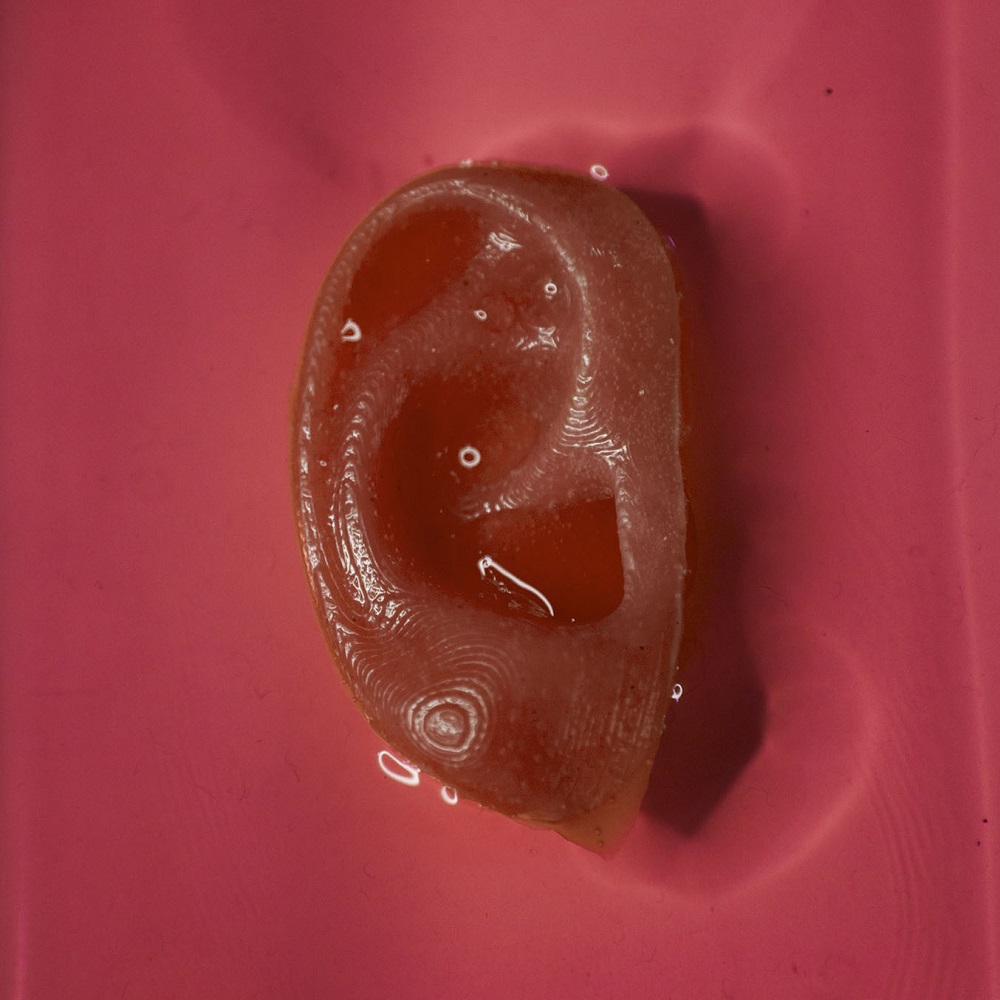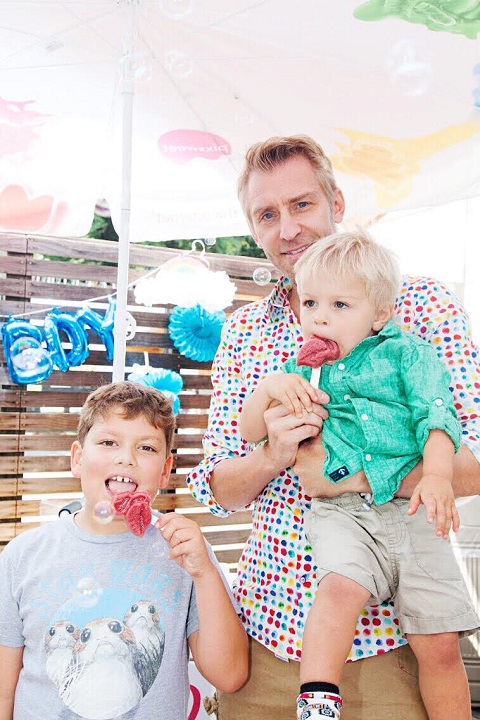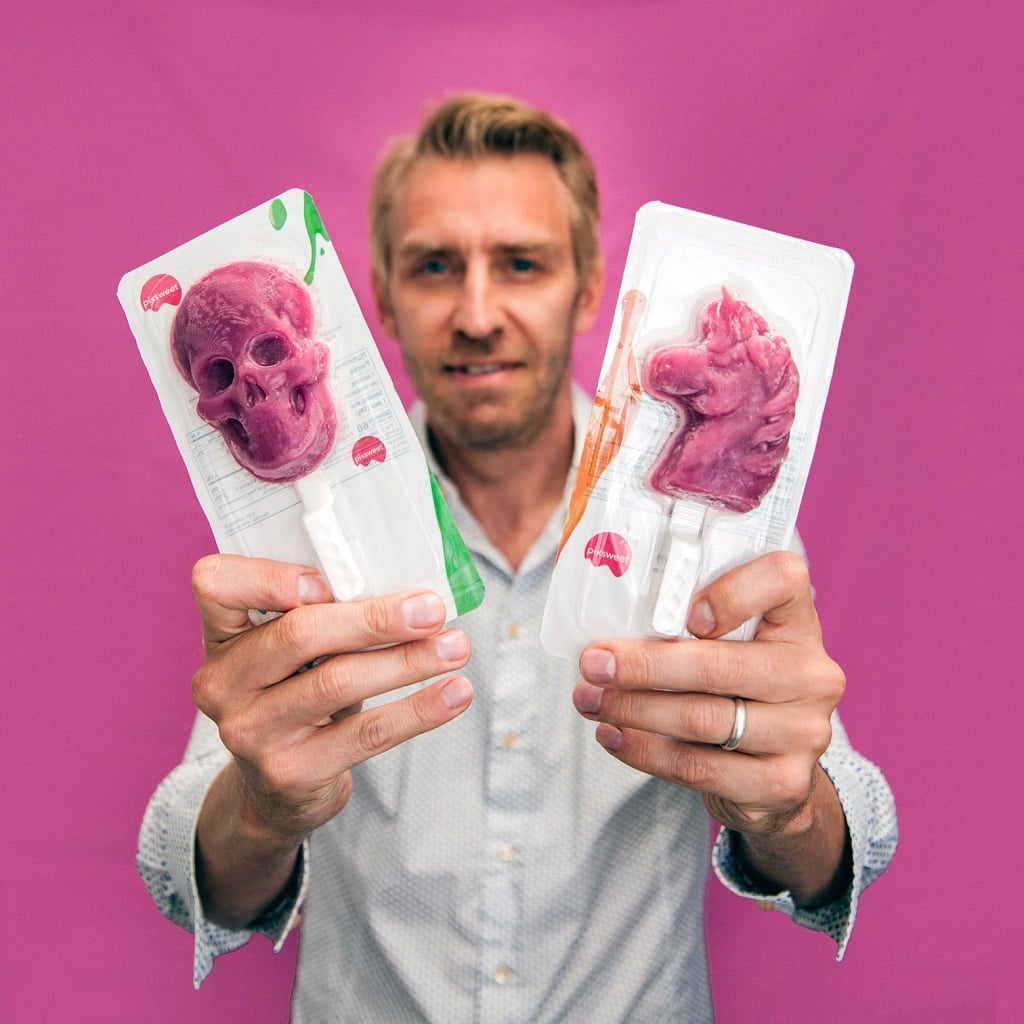![Janne Kyttanen with Pixsweet popsicles [Image: Pixsweet]](https://fabbaloo.com/wp-content/uploads/2020/05/4_img_5eb0a8a3d9170.jpg)
Prolific designer Janne Kyttanen offers insights into 3D printing, popsicles, and adding real value to industry.
We have long been familiar with Kyttanen’s design work and ambitious products, such as his recent enterprise bringing 3D printing to popsicle manufacture and his explosive innovations in design. His work is beautiful, and I can personally attest that the popsicles are delicious and well shaped; what else does he have cooking?
Curious to learn more about his long history with 3D printing and where he’s looking next, I appreciated the opportunity to catch up with Kyttanen for a conversation on conventions and complexities.
What first brought 3D printing to your attention? When did you go hands-on with the technology?
“When I was in my early 20’s I was at a fair and came across an object being 3D printed. It was at that moment everything around me turned to wireframe. I can only describe it as a type of ‘enlightenment’ experience that you often hear people talk about. In a millisecond I put the entire future of 3D together in my mind. I saw visions of turning everything inside my computer’s 3D software into actual objects! My brain was buzzing with excitement and I felt an extreme amount of energy to start working on it right away.”
How long have you been integrating 3D printing into your work?
“3D printing is the only thing I could think about for the longest time, so I have never really done anything else. I only started doing injection molding later in my career. I didn’t really see a point going to the workshop to bend some metal or carve out wood when you can just sit on your chair, model it up to perfection and send to a 3D printer.”
What inspired you to develop your 3D Thermo injection (3DTI) process?
“Einstein was quoted saying that ‘insanity is doing the same thing over and over again and expecting different results.’ The inspiration for 3DTI was due to the lack of innovative thinking in the industry in terms of 3D manufacturing. I grew frustrated with the shortcomings and after seeing so little progress and a lack of scalability, I decided to look at manufacturing from a different angle. 3D printing is great for making complex and expensive things slowly, but most of the things people need are simple things made fast and cheap. Therefore, I found an incredible opportunity to create a technology which allows you to create tailored products fast, at a low cost and locally.
Companies also tend to give false impression on 3D printing, which may get you hundreds of millions in funding in the beginning, but majority is build on thin ice and the real commercial applications are still far away. Earlier in my career, I looked at things more from the aesthetic angle. If it’s cool, I am interested. The older you get, you first want to look at it all in excel. If that’s cool, it gets my attention. 3DTI has a very impressive excel sheet. By injecting inside a product packaging and that becomes the product we just merged mold and packaging into one. You can imagine how many benefits that fundamental concept has.”
What can you tell us about Pixsweet?
“Pixsweet was the first pilot for 3DTI and has proven to be quite successful. The name Pixsweet derives from the fact that by using our in-house search engine we are able to turn pixels on the internet into sweet, healthy and delicious ice pops in a matter of seconds. In the first year we had incredible launching clients such as Warner Brothers, Instagram, Hulu, Google and more! Our product helps create edible marketing magic and thus enables a different type of experience for brands and events.”
![[Image: Pixsweet]](https://fabbaloo.com/wp-content/uploads/2020/05/1_img_5eb0a8a4656a6.png)
Why popsicles?
“Ice pops were the first choice for us because we are crazy and thought frozen logistics would be super easy! On a serious note, the truth is that we wanted to start with a product that has never been done in shapes or 3D before. Ice pops have not changed in over 125 years. I am sure you remember enjoying the rocket pop as a child. This is the only pop to have a slightly different shape from most ice pops. We also saw a huge market opportunity based on our research and analysis in the frozen good area. Consider, as an example, what Unilever was able to do with Magnum – a low-end ice cream frozen novelty into a desirable high-end product, creating the most profitable frozen confection product in their portfolio.
Companies like Unilever run super industrial processes making billions of the same shape every year. Our process can do custom shapes at the same speed with a machine that is 10 times smaller and with 5 times less capital investments.”
You’ve also worked with eyewear, among many other design types; how do you choose projects and partners?
“I feel super blessed because at this point in my career I can choose projects that really make a difference in the industry. As a result, I am very focused on consulting to companies on creative ways to get their tech in the industry in a way which creates a sustainable and profitable future for them by adding great value for their end users.
As such, I have reduced the amount of pure design projects I take on, unless it ends in real added value to the industry.”
How do different industries approach the integration of 3D printing into their operations? Do you have advice for companies looking to explore the technology?
“Such a great question but also highly complex! The best way to answer is to show where I see the process go well vs. not so well.
The first example is with a large frozen goods company in the food industry. We have been in discussions with them about our 3DTI technology and integrating it into their business for a new revenue stream. The CEO was the one to bring the idea into the company and then he handed it over to all the leaders from the various functions of the organization. They spoke with us 1-2-1 and then in group meetings analyzing and challenging the idea from all angles. Even though this is a long process, by doing their homework diligently it will lead to better decisions and integration.
This is a rare example. What I usually see is a top-down mandate or lower level innovation/marketing people trying to push the ideas up the ladder with little influence in all the other departments. The company spends big dollars on the technology but they don’t spend enough time talking to the right people in the organization thinking through the pros and cons of integration and implementation. Big investment with high risk and usually very poor results.
My advice for any company looking to integrate 3D printing is to find the right expert who has hands on experience and can be sure you are asking the right questions regarding the technology and how it would effectively integrate into your supply chain. Too often I see companies go to big consulting firms for this type of expertise and unfortunately, they aren’t the real users and don’t have actual experience with the technology.
This is also why I have started consulting to companies on these types of integrations. It has been a natural result of building our own tech which big companies see the value in adopting but most of the time we need to hold their hands to show them how it can actually work.”


Can you tell us anything about what you’re working on now, or what we can expect to see next?
“Now that we have been able to prove the business model with ice pops, we have several interested clients who are ready to test other applications with 3DTI. The process can handle any liquid, paste, gel or powder substance.
The picture gives you a glimpse of the potential we have and some of the materials/ingredients we have tested so far. For example, we can make hydrogels in 3DTI – faster, cheaper and more accurate than by directly 3D printing them, but how does that add value in the field of medicine or laboratory testing? We need to partner with the right pharmaceutical companies who are innovative and desire to adopt new technology like this quickly to create more value in their business model.”
What else should we know?
“My wife and I just celebrated our son’s 2nd birthday! As he gets older I can’t help but imagine all the technology and creativity he will be exposed to. As a result, I am sure he will surpass my knowledge of 3D in no time.”

Via Janne Kyttanen and Pixsweet











